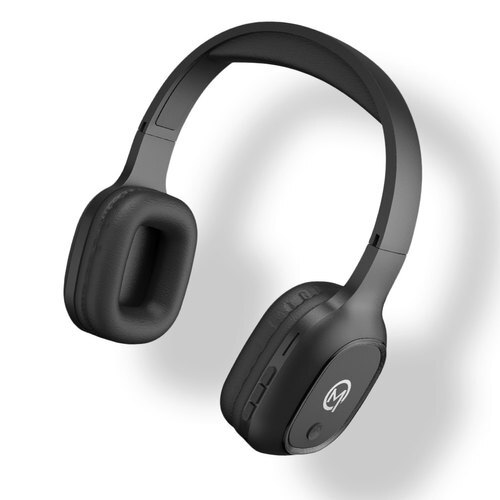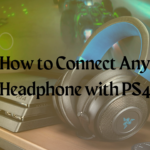In this blog we will talk about all the ways by which Ear Pads Affect Headphones. Just keep reading to make you headphones and listening experience better.
Curvature of The Ear Pads
According to some audiophiles, differently shaped ear cushions alter the sound quality. That is technically correct. However, because the earpad design is dictated by the shape of the headphone earcups and you can’t change the earcup shape, it’s impossible to correctly put different-shaped pads on the same headphones. Some folks try a do-it-yourself approach, but I wouldn’t recommend it unless you know what you’re doing.

Ear Cushions
Headphone ear cushions have a significant impact on the whole experience with your headphones. Comfort, noise isolation, and audio quality, in particular. Earpads have an impact on the comfort.
The Earpads are always in contact with the skin, making listening either enjoyable or unbearable. Thick pads made of soft foam can make any pair of headphones comfier. Sufficient padding is thicker pads preferable since it allows more space between your ear and the foam that is covering the driver.
The Fabric and velour are the most comfortable in hot weather because they breathe. They keep your skin from overheating. Real and imitation leather are both comfortable to the touch, but they have poor breathability and cause sweating around the ears.
Design Of The Ear Pads
The design of the headphone pads is also important. Over-ear pads completely cover your ears without pressing your earlobes against your skin. Comfort is also affected by the headband cushion, which is usually not removable. Headphone hair can be caused by the headband, which is a small nuisance.
Isolation of passive noise. Headphones rely on their design and ear pads to keep sound in. If your pads release a lot of noise, your headphones will suffer from sound leakage, background noise intrusion, and poorer bass response. That is why the earpads must snugly fit around your ears. You must also select the appropriate supplies for the job.

EarPad Material
Leather (both imitation and real) and thick cloth are the best materials for passive noise absorption. It prevents any potential gaps by forming an airtight seal. Velour isn’t as successful in blocking out noise, let alone preventing others from hearing your music. The foam inside the ear cushions condenses and stiffens with age. This hinders it from correctly fitting your ears, allowing more ambient noise in.

Earpads’ Condition
Headphone ear pads have an effect on sound quality as well, notably bass response. While drivers and housing are essential to the sound signature of a headphone, ear pads are the third component. When aiming to obtain a desirable result, manufacturers carefully select the materials and shape of the pads. The sound changes as the headphone pads lose their form and the foam inside gets hard. The difference is slight and builds up gradually, but at some point, headphones begin to sound different. The bass suffers the most as a result of the poor seal. Fine details might also fade away with time, which may not bother a casual user but is critical for professionals working in a studio.
EarPads’ Care Tips
When should you replace your earplugs?
- When earpads begin to lose their shape and acoustic properties, usually, the symptoms that we need to replace the headphone pads are obvious.
- The memory foam inside stiffens and becomes uncomfortable, and the exterior material becomes dirty.
- Leather can break and even peel off.

- Velour no longer feels soft and soothing but rather rigid, as if all of that sweat over the years bonded the fibers together.
- In difficult situations, earpads begin to rot and stink.
All of these symptoms indicate that you require a new pair of headphone pads.
How often should the ear cushions be replaced?
- When the ear pads begin to flake or no longer provide the same level of support as before, they must be replaced. It all depends on how serious you are about getting the best out of your wireless headphones.
- In general, with proper care, they can live for years. If you don’t use your headphones very much, you should probably replace them every two or three years. Or when you notice the above-mentioned wear and tear.
- It’s comparable to the ear tips of in-ear headphones.
- If you use your headphones for professional purposes, you should replace the headphone pads every 6-8 months. When you use them on a regular basis, the foam inside stiffens faster. This alters the audio quality and the perceived details in the mix.
How do you choose the best earpads?
Try buying the original new ear pads if you wish to restore the original sound and comfort of your headphones. If the maker no longer sells them, try for ear pads of a comparable style. (the same material and shape). You can also try out different earpads to determine which ones perform best with your headphones. Apart from entirely leather or velour ones, there are also hybrids (a mix of velour and leather). Some headphone pads are also slanted to focus the sound of the drivers straight into the ear canal, enhancing the illusion of soundstage. However, be aware that shape and material of the earpads can change the audio very significantly. If you try to experiment a lot with other materials, you can end up with better-looking pads but a worse (or changed) sound.
Before purchasing headphone pads from different manufacturers, check forums to see what others suggest for the headphones. When getting from other manufacturers, find out how your existing earpads are locked in their place. Some are very easily attachable by just twisting them onto the earcup. Others have a plastic like construction that needs to be clicked into place. Unfortunately, there are also some headphones that have permanently glued on pads. You can still replace these, but it takes a little more knowledge (and patience) to do it.
FAQs
What is an ear-pad?
An ear-pad is a cushion between headphone drivers and your ears. It makes the headphones comfortable to wear for humans creating a soft and comfy barrier between plastics and the skin Do ear pads affect sound quality?
Ear pads do affect sound quality, especially the level of bass. Headphone cushion material is the most important element. Materials like leather and thick fabric that offer great passive noise isolation improve the bass response.
Do ear pads make any difference?
Ear pads make a huge difference in headphone comfort, passive noise isolation, and sound quality. Soft and thick pads offer superior comfort. Earpads with good passive noise isolation improve noise blocking and boost bass.
Are headphone pads removable?
Not all headphone ear pads are removable. Thankfully, most are easily replaceable, but some headphones do have them glued on. It takes some technical work to replace them, but it’s still doable.
Why do headphone pads peel?
Headphone pads peel because of material deterioration. Faux, synthetic leather is more prone to peel after a couple of years. This is the limitation of the material and can only be fixed by replacing the ear pads.
How do you fix peeling headphones?
Unfortunately, you can not fix the peeling headphone ear pads. Once the pads start the peeling and chaffing, the only way to fix them is by replacing them with new ones.
Are headphone cups universal?
Headphone earcups are not universal. Some headphones have interchanging earpad sizes, but generally, each headphone has a unique ear cup size. When purchasing replacement earpads, make sure you get the right size that fits your headphones.
Conclusion
Just like ear tips in comfortable earbuds, ear pads play a very crucial role in comfortable headphones. You can own the best headphones in the whole wide world, but if you do not use the right ear pads, they won’t feel good and comfortable on your head. They are a part that most often breaks or deteriorates to the point of needing a replacement. While you can find ear pads for different purposes, we’re yet to see a universal type of earpad that would be the best for everything. What are your experiences with ear pads? Let us know in the comments below.




